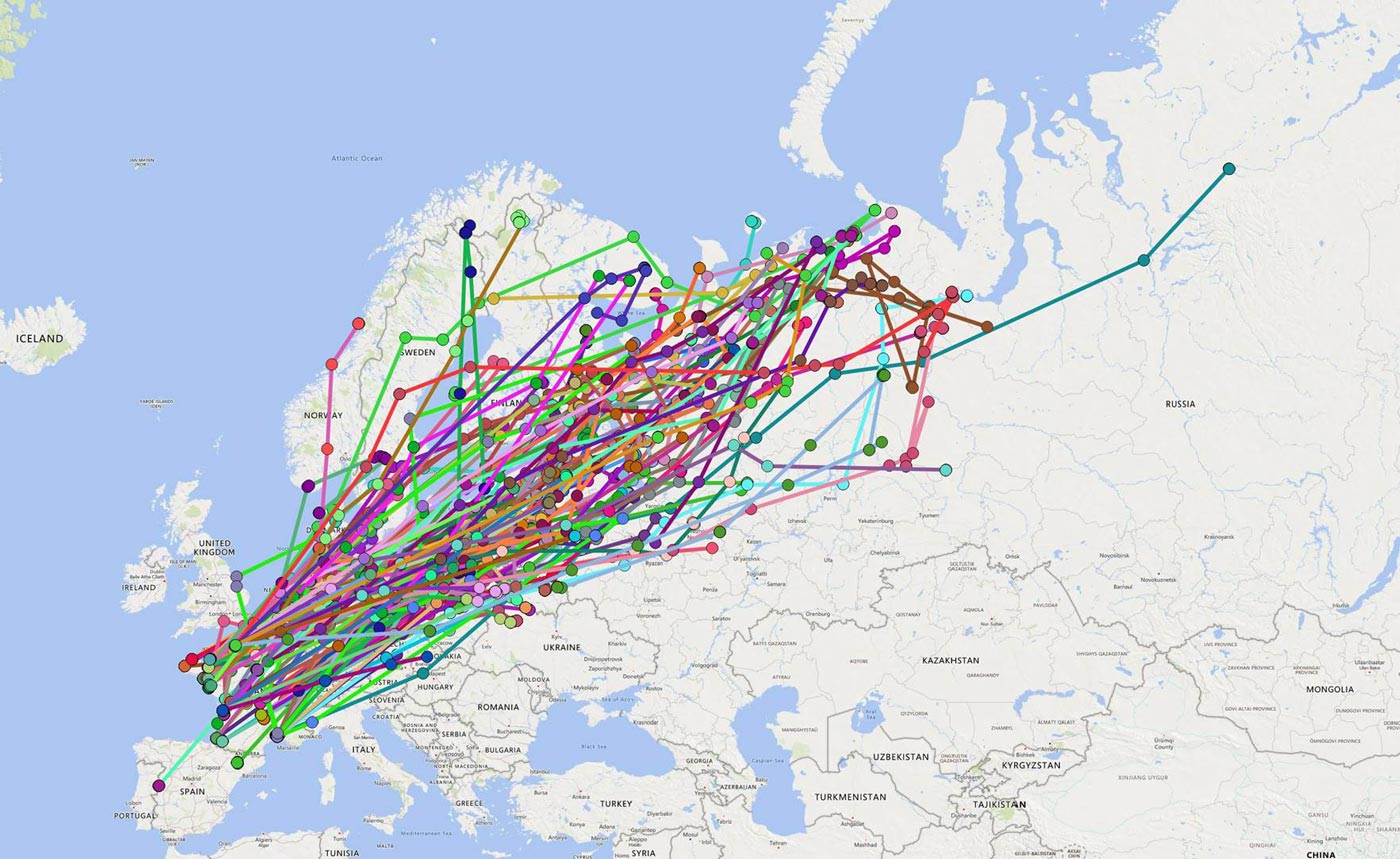GPS tag reveals record 6,000 km snipe migration
French researchers have used GPS tags to uncover the impressive migrations of Common Snipe wintering in the country.
One female snipe travelled an extraordinary 6,000 km to a nest in a remote area of central Siberia, marking a new record migration distance for the species.
The bird was initially fitted with a tag on 23 February 2022 at Vauvert, on the edge of the Camargue in southern France. It commenced migration on 17 April, stopping in Hungary for a short period, before reaching western Russia on 1 May. Later, it crossed the Urals between 19 and 22 May.

The female Common Snipe migrated 6,000 km from southern France to north-central Siberia (Andy Thompson).
It was at this point that things became particularly interesting. The bird continued its journey, moving further east than any of the previously tagged individuals before. On 25 May, it stopped near the Yenisei River, within the Arctic Circle, after travelling more than 1,000 km in three days.
From 28 May the bird became stationary in a humid zone in north-central Siberia. This spring migration totalled around 6,000 km and was completed in 40 days.
Since 2017, some 165 Common Snipe have been equipped with mini-tags weighing 3-4 g as part of a project led by the French Office for Biodiversity (OFB) with the International Snipe Hunters Club.
Of all the birds tagged over this five-year period, few have previously nested in Siberia east of the Urals, with most breeding in Eastern Europe or western Russia.

Map showing migration routes of Common Snipe tagged in France since 2017, with the record breaker's journey clearly visible (OFB).
If all goes well, the researchers hope to see the start of the return journey at the beginning in September or October, once post-breeding moult is complete.
From mid-June, location transmissions by the beacons are spaced out to save battery power, with one position taken per week until mid-September. Then the tags will return to two transmissions per week detect and identify the bird's autumn migration as accurately as possible.

